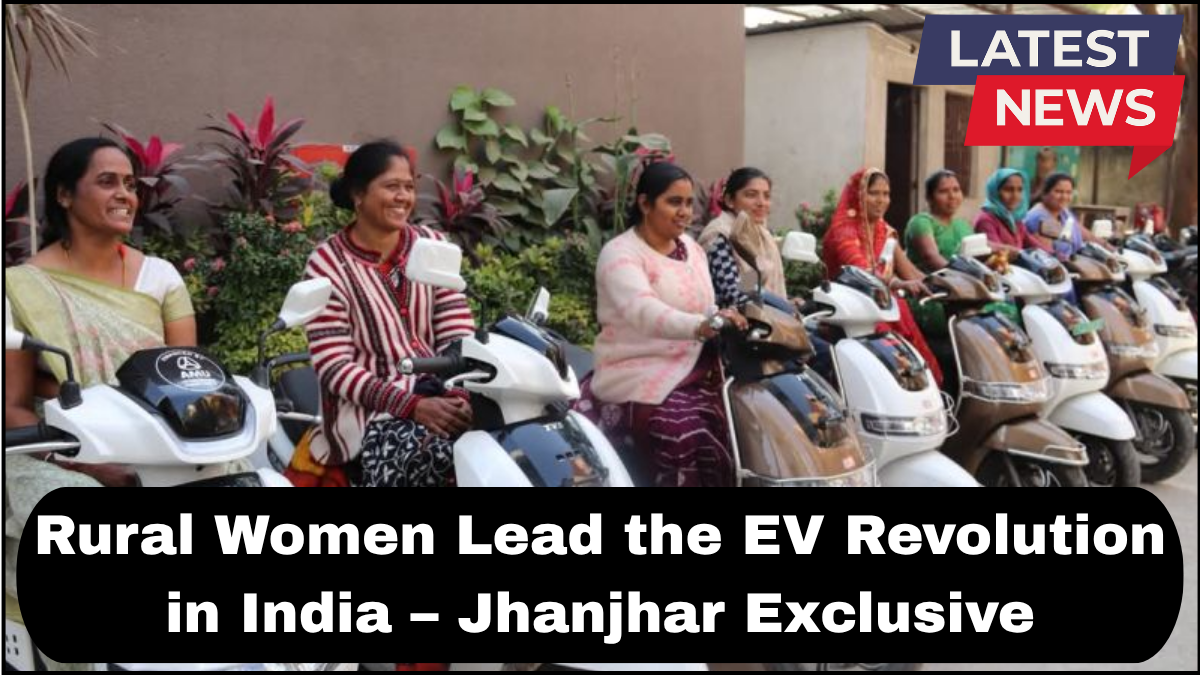Electric vehicles (EVs) are often associated with urban highways, tech hubs, and clean city transport. But in a powerful shift, it’s rural India where a silent revolution is gaining traction. In districts like Jhanjhar, women are emerging as unexpected but formidable leaders in the EV movement. By becoming EV drivers, these rural women are not only transforming mobility but also challenging deep-rooted gender norms.

Women EV Drivers in Rural India: Breaking Barriers
For generations, mobility in rural India has been constrained by both poor infrastructure and rigid social norms. Women, in particular, have been largely excluded from transportation roles. But the arrival of affordable electric vehicles, especially two- and three-wheelers, is reshaping that narrative. Today, women EV drivers in rural India are earning incomes, expanding access to services, and becoming symbols of progress.
Take the example of Savita Devi from a village near Jhanjhar. Once dependent on her husband for all travel, she now owns an e-rickshaw. She uses it to ferry school children, transport goods, and even take elders to clinics. Savita’s story is echoed across dozens of districts, where EV ownership is giving women newfound freedom and financial stability.
The Jhanjhar Model: Empowerment Through Innovation
Jhanjhar has emerged as a pioneering example in this movement. A collaboration between local self-help groups, NGOs, and EV manufacturers has led to structured training programs for rural women. These programs go beyond driving lessons. They include sessions on vehicle maintenance, basic business skills, and digital literacy—ensuring that women EV drivers are equipped to succeed.
These initiatives are supported by government schemes such as the FAME India (Faster Adoption and Manufacturing of Electric Vehicles) and state-level subsidies that reduce the upfront cost of EVs. Microfinance institutions and cooperative banks are also stepping up to offer loans with lower interest rates specifically for women entrepreneurs.
Gender & Mobility: A Shift in Social Dynamics
Mobility is more than just transportation. It’s a gateway to education, healthcare, employment, and social participation. By controlling their own means of transport, women in rural India are gaining access to these opportunities without relying on male family members.
This change also influences perceptions around gender & mobility. As women are seen confidently driving through village lanes and town roads, traditional ideas about “a woman’s place” are being rewritten. In many communities, these women are now viewed as role models, inspiring younger girls to pursue non-traditional careers.
Environmental and Economic Impact
The growth of women EV drivers in rural India is also generating positive environmental outcomes. Electric vehicles produce zero tailpipe emissions, making them ideal for India’s pollution-prone regions. For villages surrounded by farmland and forests, clean transport helps maintain ecological balance.
Economically, these EVs have low running costs and maintenance requirements, which makes them more sustainable than diesel or petrol alternatives. For women drivers, this translates into better profit margins and long-term financial security.
Challenges and the Road Ahead
Despite the momentum, challenges remain. Inadequate charging infrastructure, patchy road connectivity, and a lack of consistent power supply in some areas hinder EV adoption. Moreover, social resistance from conservative families can still block women from participating fully.
Addressing these issues requires a coordinated effort. Policy-makers, private companies, and civil society must work together to build EV-friendly ecosystems in rural areas. Increasing awareness, investing in infrastructure, and celebrating success stories will be key to sustaining this movement.
FAQs
Q: Why are EVs becoming popular among women in rural India?
A: EVs are cost-effective, require less maintenance, and are easier to drive. These features make them ideal for rural women looking to become economically independent.
Q: How do women receive training to become EV drivers?
A: NGOs, local cooperatives, and EV companies conduct workshops that cover driving, maintenance, and entrepreneurship skills.
Q: What role does the government play in promoting rural women EV drivers?
A: The government supports this initiative through subsidies, incentives under schemes like FAME India, and partnerships with financial institutions to provide accessible loans.
Q: Are there any safety concerns for women driving EVs in rural areas?
A: While safety remains a concern, community-based programs and the growing number of women drivers are gradually creating safer and more accepting environments.
Q: What is the long-term impact of women EV drivers in rural India?
A: Long-term benefits include increased gender equality, economic empowerment, cleaner environments, and stronger local economies.
click here to learn more